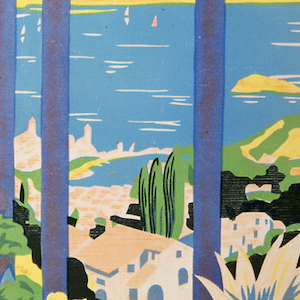Light Literature
By Catheryne Kelly
Life-providing, awe-inspiring light. Where, or what, would we be without it? All that is and all that has been would be nonexistent without this miracle. Authors throughout the ages have doubtless been inspired by its power. In Light Literature we plunge deep into the world of letters for some of our favourite examples of light represented in writing.
We’ve all heard that famous proclamation; “Let there be light.” It’s possibly the most famous line in the cornerstone of all western literature, The Bible. The holy text recognises light as a manifestation of the goodness and grace of God and is continued throughout the Old and New Testament. In the Bible, radiance speaks to us as a symbol of hope, guidance, redemption and purity.
What’s interesting is how writers of both prose and poetry have adopted and adapted this symbol.
In the examples of literature we have selected, light serves many diverse purposes, and reaches much further than its heavenly epithet. Our selection shows light as a force for realisation, empowerment, spectral activity, memory, superficiality, surrealism, capitalism and death.
Not only does light make for beautiful, memorable imagery, but deep, meaningful symbols throughout literature. Light’s manipulation in writing really pays testament to it as the ultimate creative source.

We’ve all experienced the feeling of déjà vu at some point in our lives. This is exactly Rossetti’s focus in his poem, Sudden Light. Here he views light as a symbol of realisation, a flash of understanding, the feeling that you’ve been here before, maybe in a past life. Notice how the word ‘light’ only appears in the title and threatens to re-appear in ‘flight‘, ‘lives’, and ‘delight‘ like brief shafts of sunlight creeping through partly drawn curtains. Light is at once present and absent; just like a hazy half-memory.

From the very first chapter, we are made to understand the symbolic power of the green light in The Great Gatsby. It encapsulates the message of the entire work as a beacon of Gatsby’s love for Daisy, money, and the American Dream. The light is ultimately elusive, such as the hollow life that Gatsby has bought his way into. It is at once a symbol of hope and futility.

As with most of Dickinson’s work, this poem is highly ambiguous. Put simply, There’s a certain Slant of light describes the poet’s feelings upon seeing a shaft of cold, dense winter sunlight. It stirs up feelings of divine despair and pain. Here God-sent light is transformed to mean the opposite of hope, optimism and enlightenment.

The colour red is part of the very symbolic lifeblood that runs through the veins of Beloved. It is at once a sign of creation and destruction, life and death, presence and absence. “A pool of red undulating light” welcomes Paul D into Sethe’s house for the first time. The glare of the light shocks him with an unsurmountable sense of grief. Sethe then explains that the red light represents the presence of a dead baby in ghost form.

Oh to have a teacher like Mr Luman! As his name suggests, he is an enlightening figure, a demystifier by nature. Light in this poem emanates from the teacher. The culture that he wishes to instil within his pupils invites a spark of understanding. The poet immortalises his teacher’s life through poetry, as one would the hero in a Shakespearian tragedy, which is no doubt what Mr Lumen would’ve wanted.

Amir witnesses an event that haunts him forever. Regretting that he didn’t intervene, the “brief bursts of light” of fireworks at his birthday party symbolise how Amir thinks he can set the record straight. However, there is much to be desired in this lightbulb moment as his plans have no real substance. Here, we are invited into the optimistic but two-dimensional mind of a child. Just as the fireworks are synthetic and artificial sources of light, so is the source of Amir’s superficial idea.
Hopefully we’ve introduced you to some enlightening reads in Light Literature . Whatever the purpose of light symbolism in each of the works we’ve presented, we hope you agree that it makes for some interesting and unforgettable literature.
If you’re on the hunt for even more literature, why not read Short and Sour Stories for a dose of small and snappy narratives that pack a punch.





